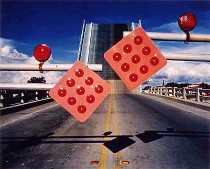 No one else will do it for us. That’s the sorry truth. If you’re an artist or an art lover and want to get beyond the studio, it helps to knuckle down and take charge. And suddenly, taking charge seems to be part of what’s happening in Philadelphia, and that’s a really great thing for the art world (right, c-type photo by Guenther Cartwright).
No one else will do it for us. That’s the sorry truth. If you’re an artist or an art lover and want to get beyond the studio, it helps to knuckle down and take charge. And suddenly, taking charge seems to be part of what’s happening in Philadelphia, and that’s a really great thing for the art world (right, c-type photo by Guenther Cartwright).Last weekend, Roberta and I got a call and invitation to come over from photographer Laurence Salzmann, who created Photo West Gallery in Powelton Village. The gallery was created with tlc, and looks great–modern yet personal and a little quirky–for example, the roof garden on the second level. Anyway, he wanted to make sure we got to see the terrific show there, “The RIT Connection,” which is a classic use of a network and some do-it-yourself gusto. The participating photographers all have a Philadelphia and an RIT connection.
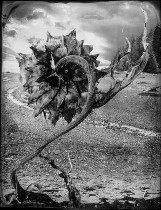 When we arrived, we didn’t so much decline as pick up on an offer of mate or wine (nonaddictive, Salzmann crooned about the mate, holding his decorated mate gourd with silver straw and sipping once in a while). Eventually wine arrived unbidden, but it’s hard to take notes and drink wine–or anything, including mate or even water for that matter (left, by Alida Fish).
When we arrived, we didn’t so much decline as pick up on an offer of mate or wine (nonaddictive, Salzmann crooned about the mate, holding his decorated mate gourd with silver straw and sipping once in a while). Eventually wine arrived unbidden, but it’s hard to take notes and drink wine–or anything, including mate or even water for that matter (left, by Alida Fish).
With this space, Salzmann said, he hoped to build a community of photographers. He pointed out a young woman who had arrived a little earlier, looking for a community and a place to share her photos. She was a new connection and he was a pleased as mate.
And then Salzmann introduced us to the show’s curator, W. Keith McManus, who used to teach at RIT and actually taught his students such useful things as how to choose what kind of photographer to be based on the kind of lifestyle. McManus’ said the thrust of an RIT photography education was social documentary. And although that might not be true of each of the photographers here, the exhibit did give a sense of the world around us at the start of the 21st century.
Salzmann interrupted the curatorial talk to introduce us to a couple more people–Irina Hasnas Pascal, a Fulbright Scholar here from Rumania for museum studies at UArts, and then a little later, Tom Standish, a former neighbor and husband of curator Amy Schlegel now in Boston. Plus we met Ryan Collerd, “like the greens with an e,” he said, a young West Philly photographer who was gallery sitting. By time I tore myself away from the party, I’d had enough wine (that’s a glass, but who’s counting?) to really, really enjoy the photographs.
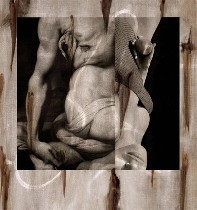 Most of the photographs had some digital element in their production, according to McManus, but not all. The work ranged from Freson prints of studio set-up landscapes with painterly additions, by Allen Vogel, to blue and pink C-type industrial landscapes from Guenther Cartwright to sexy veiled sepia-toned archival-pigment prints (that’s a digital print) from local photographer and dealer Paul Cava. (right, Cava image)
Most of the photographs had some digital element in their production, according to McManus, but not all. The work ranged from Freson prints of studio set-up landscapes with painterly additions, by Allen Vogel, to blue and pink C-type industrial landscapes from Guenther Cartwright to sexy veiled sepia-toned archival-pigment prints (that’s a digital print) from local photographer and dealer Paul Cava. (right, Cava image)
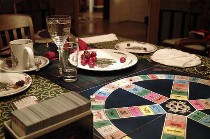 The interests ranged to architecture, documentation of birds, the light and dark tones of nature, the clues to how people live their lives–both in the open and behind closed doors (left, Jay Pastelak’s dessert photo).
The interests ranged to architecture, documentation of birds, the light and dark tones of nature, the clues to how people live their lives–both in the open and behind closed doors (left, Jay Pastelak’s dessert photo).The contrast of work from one photographer to the next is sharp and exciting. In addition to work familiar to Philadelphia gallery goers from photographers practicing in Philadelphia, like Robert Asman and Alida Fish, there was unfamiliar work from local folks as well (sorry, but no more links to photographers or I’ll never get this post on line).
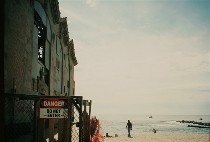 I was new to Randl Bye’s quirky takes on sea meets tawdry architecture in Atlantic City (right). Also new to me were the strange, earthy texture of the concrete Mercer Museum roofs from Bruce Katsiff (below left), although I knew his name from the Michener Museum where he’s director and CEO. I’ve only seen Mike Perez’s work in the Philadelphia Inquirer, where he’s a staff photographer (below, right, the 9-mm. gun).
I was new to Randl Bye’s quirky takes on sea meets tawdry architecture in Atlantic City (right). Also new to me were the strange, earthy texture of the concrete Mercer Museum roofs from Bruce Katsiff (below left), although I knew his name from the Michener Museum where he’s director and CEO. I’ve only seen Mike Perez’s work in the Philadelphia Inquirer, where he’s a staff photographer (below, right, the 9-mm. gun). Nor was I familiar with Jeannie Pearce or Michael Becotte, Jay Pastelak or Chuck Gershwin. And although I know Tony Ward’s name, I don’t think I’ve ever seen his work, which with Cava’s was segregated in a little subgallery that I dubbed the blue room. (I’m a bit of a prude and had some trouble looking at this for long.)
Nor was I familiar with Jeannie Pearce or Michael Becotte, Jay Pastelak or Chuck Gershwin. And although I know Tony Ward’s name, I don’t think I’ve ever seen his work, which with Cava’s was segregated in a little subgallery that I dubbed the blue room. (I’m a bit of a prude and had some trouble looking at this for long.)
Some of the photographers have Philadelphia in their background but no longer live here. They include Cartwright, Vogel and McManus. This show closes at the end of the week, so get there if you can (check the gallery site for hours; they’re limited).
McManus and Salzmann admitted cheerfully that most of the photographers in the show were from their own age group. But Salzmann is reaching out across generations with the gallery and the events he plans to hold there.
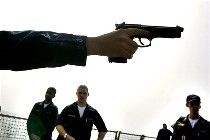 Pascal, who helped with this exhibit, will be curating a show in November based on a trove of discarded photos of Rumania that she and Salzmann found. And we learned that photographer Blaise Tobias was planning a show of Powelton Village photographers in October.
Pascal, who helped with this exhibit, will be curating a show in November based on a trove of discarded photos of Rumania that she and Salzmann found. And we learned that photographer Blaise Tobias was planning a show of Powelton Village photographers in October.
Gallery 339 opens
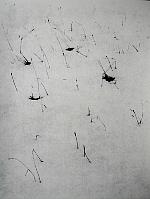 And speaking of reaching out, Salzmann also had made connection with Gallery 339, the spectacular new photography gallery at 20th and Pine that Roberta wrote about here in the Philadelphia Weekly.
And speaking of reaching out, Salzmann also had made connection with Gallery 339, the spectacular new photography gallery at 20th and Pine that Roberta wrote about here in the Philadelphia Weekly.
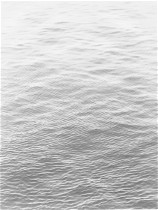 Not only is the space amazing, but the exhibit this month, “Stilled: Bohnchang Koo and Edward Dimsdale,” is amazing. Bohnchang Koo, a Korean who turns walls and vines into contemplative images of usually-unnoticed detail and who turns ocean views into infinite waves that bring to mind the ocean drawings of Vija Celmans, makes photos that look like drawings or prints (right, Koo’s “Ocean 3-1”). And Edward Dimsdale, an Englishman who has another approach to turning the ordinary into mystery, makes images rich with light and dark, some of which also have a drawn quality (left, “Grasses,” taken in winter).
Not only is the space amazing, but the exhibit this month, “Stilled: Bohnchang Koo and Edward Dimsdale,” is amazing. Bohnchang Koo, a Korean who turns walls and vines into contemplative images of usually-unnoticed detail and who turns ocean views into infinite waves that bring to mind the ocean drawings of Vija Celmans, makes photos that look like drawings or prints (right, Koo’s “Ocean 3-1”). And Edward Dimsdale, an Englishman who has another approach to turning the ordinary into mystery, makes images rich with light and dark, some of which also have a drawn quality (left, “Grasses,” taken in winter).
This is another show that’s in its last week, so don’t dillydally.
Coming up at 339 are a number of exhibits by local photographers, the next being work by another Philadelphian with an RIT connection–Stuart Rome.
These are halcyon days for photography exhibits.









